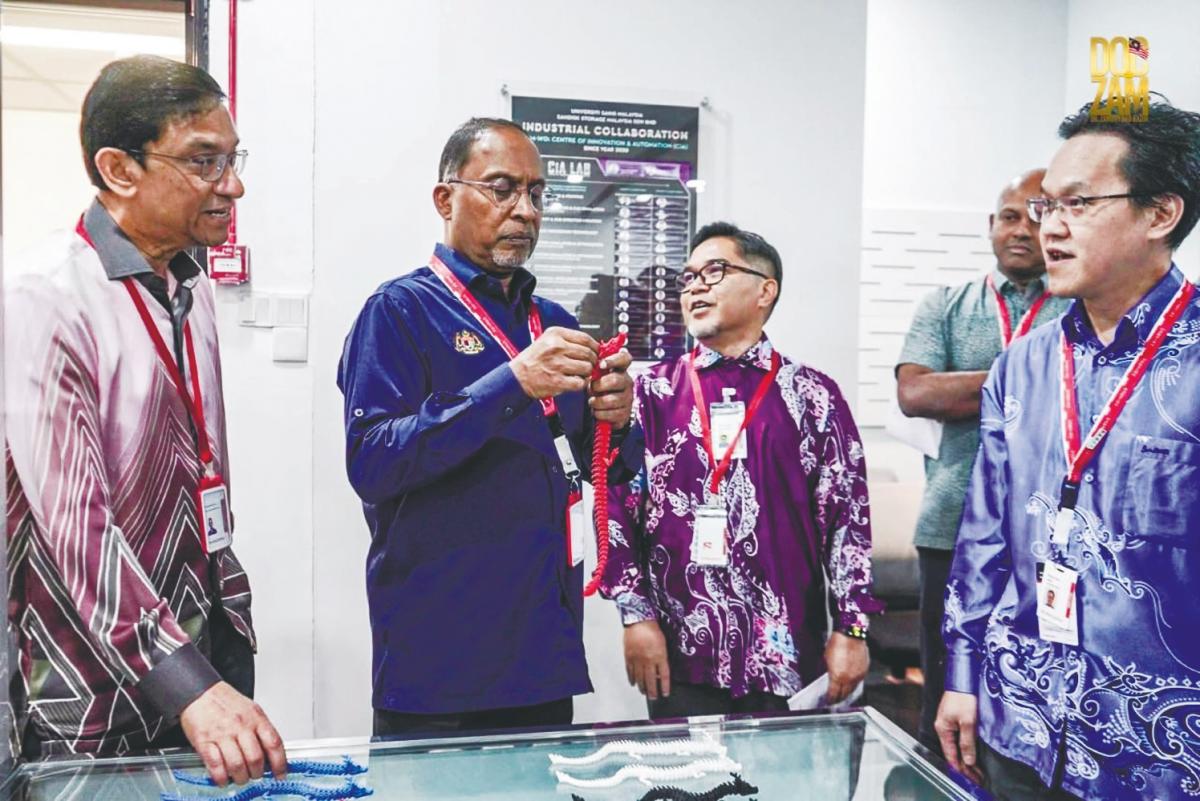BATU KAWAN: Malaysia’s long-term success in the global semiconductor sector hinges on how effectively the country connects its knowledge base to real industry needs, according to Higher Education Minister Datuk Seri Dr Zambry Abd Kadir.
He said this is how the country can build real capacity and strengthen its global position, in anticipation of 10,000 vacancies for IC design professionals and tens of thousands more skilled workers in the manufacturing sector, in the next five years.
In 2024, he added that the Ministry of Investment, Trade and Industry had highlighted that Malaysian universities are only producing about 5,000 engineers annually.
“Our future strength depends on how we connect education with industry to support this field,” Zambry said at the 32nd IEEE International Symposium on the Physical and Failure Analysis of Integrated Circuits (IPFA) 2025 on Thursday.
The IEEE IPFA is an international forum for researchers, engineers, and industry experts focused on integrated circuit reliability and failure analysis.
Zambry revealed that Malaysia currently plays a vital role in the global semiconductor ecosystem, contributing over 13% of global back-end capacity and exporting over RM200 billion annually.
He also emphasised that this is a strategic sector where countries around the world are competing to build capacity.
The global semiconductor industry, projected to exceed US$1 trillion (RM4.23 trillion) by 2030, has become a geopolitical priority for many nations. In recent years, countries like the United States, China, Taiwan, and South Korea have ramped up investments to secure supply chains, advance chip design, and maintain technological leadership.
Malaysia, as part of the global value chain, especially in back-end assembly, testing, and packaging, will benefit from moving up the value ladder through talent development, research collaboration, and innovation-led manufacturing.
To meet such capacity-building needs, Zambry said, Malaysia must position itself through strategic action and a strong national ecosystem and cited the National Semiconductor Strategic Plan as a roadmap to nurture 100 high-revenue semiconductor companies and build a robust talent pipeline to meet future demand.
“To reach this vision, we must strengthen the human foundation. That foundation lies in our higher education institutions,” he said, adding that universities play a critical role in shaping industry-ready graduates.
However, he noted that challenges remain as some graduates are still not placed in positions that match their training, while others pursue opportunities abroad. “These patterns show that we must strengthen the connection between education and real industry needs.”
He gave the example of collaboration between Universiti Sains Malaysia (USM), Taiwan Semiconductor Research Institute and Taiwan Semiconductor Manufacturing Company on IC design, while also partnering with Intel Foundry Services in Oregon to access advanced chip design technologies.
To address industry demand for upskilling, the ministry has introduced flexible learning pathways such as the APEL-based Master’s Programme in Advanced Semiconductor Packaging, endorsed by leading industry players including Intel and Micron.
Zambry also announced that the IC design apprenticeship programme, led by the Collaborative Microelectronic Design Excellence Centre in USM, is being scaled up to provide Electronic Design Automation tools to universities nationwide, enabling shared learning and research capabilities.
“We must prepare graduates who can meet industry needs with competence and leadership. This responsibility must be carried together by our universities and supported through strong industry participation,“ he said.
He added that the Higher Education Ministry would continue supporting efforts that build skills and connect graduates to opportunities. “This focus is in line with the values of Malaysia Madani, where knowledge serves both progress and shared prosperity,” he said.









